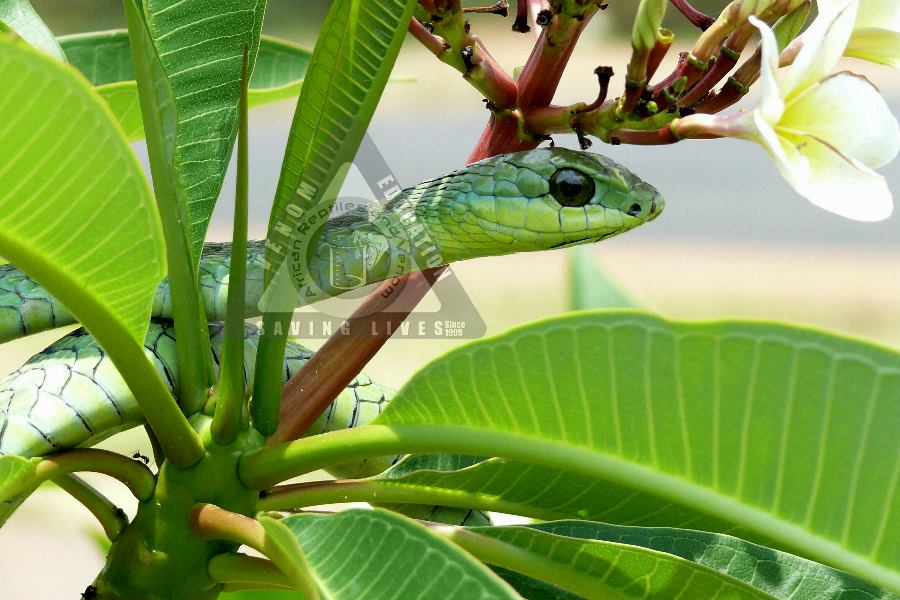Boomslang
VERY DANGEROUS
Long, slender. Adults up to 1 800 mm long. Head large, somewhat swollen and distinct from neck. Eye round and very large; pupil horizontally pear-shaped; iris green in juveniles; grey or brown in adults. Colour highly variable; adult females usually grey or brown; adult males usually green with black edging to scales, producing a barred effect, or black with yellow spot on each scale; juveniles grey above, head brown, jaw white; lighter below. Strongly-keeled, overlapping dorsal scales in 19 oblique rows at mid-body; anal divided. Often misidentified.
Maxillary bone bears 3 large, sub-equal, grooved fangs posteriorly, located below the eye.

Highly potent, slow-acting, pro-coagulant (haemotoxic) venom causing internal haemorrhage. Adult lethal dose: 1 mg; yield: 1 – 15 mg. Death 24 – 72 hours or more after bite. Well-known herpetologist, Karl P. Schmidt, received a bite from a single fang in a 750 mm specimen and died 24 hours later. Large fangs coupled with considerable gape of mouth enables snake to embed fangs into an aggressor’s torso with little difficulty, although venom may not be injected immediately. Chews to allow venom to enter victim’s tissue. Venom potent enough for just a scratch to cause serious symptoms. Most bites recorded by snake catchers. A monovalent anti-venom is available which is highly effective, even days after the bite.
Savanna and open bush to coastal bush. Also found along tree-lined streams and rivers within mesic grasslands of Highveld of Gauteng.
Diurnal, arboreal. Preys on birds, nestlings, chameleons, frogs, lizards and occasionally, small mammals. Avoids human contact and rarely bites. If molested, expresses by inflating front part of body and may strike out. Attracted to human habitation by trees and water, as well as captive aviary birds, becoming an easy target for killing because of inability to escape through aviary mesh once a bird has been swallowed.
Reproduces by egg-laying.














